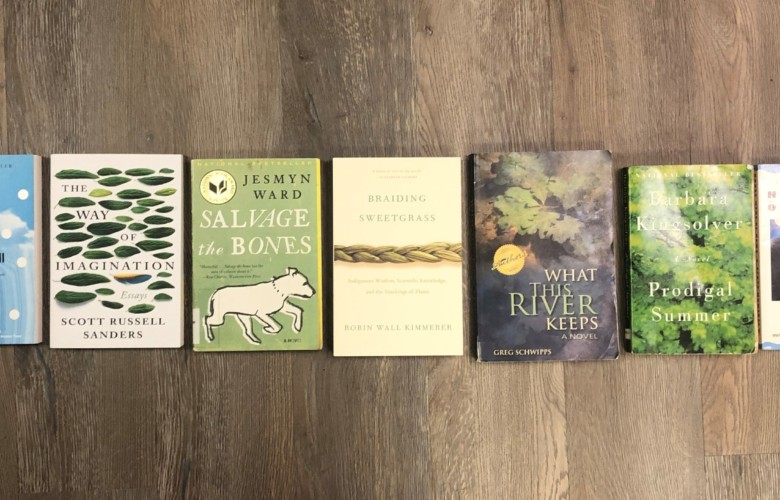Unearthed Novel Conversations Collection
June 3, 2021In honor of our Unearthed initiative, we’ve created a book collection for the Novel Conversations lending library.
In honor of our newly launched Unearthed initiative, we’ve curated a book collection for the Novel Conversations lending library, featuring books which explore how we shape the environment and how the environment shapes us. We have ten or more copies of each title that you can check out for free to read with your book club.
Here’s an introduction to the titles and an excerpt from each that we think illuminates the themes of Unearthed.
Human Relationship to the Environment
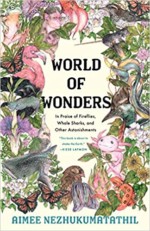
World of Wonders by Aimee Nezhukumatathil
A 2020 book of essays exploring how we relate with the non-human inhabitants of the world.
“Under a brilliant moon, and unbeknownst to us, the darkened world silvers and shimmers from pink and ebony wings, a small thunder. We can’t possibly hear such an astonishing wind while we try to keep in step with our small dances on this earth. But we should try. We should try.”

Leaves of Grass by Walt Whitman
Whitman’s 1855 magnum opus, which explores the relationship between the self and nature through poetry.
“The spotted hawk swoops by and accuses me, he complains of my gab and my loitering.
I too am not a bit tamed, I too am untranslatable;
I sound my barbaric yawp over the roofs of the world.”

Pilgrim at Tinker Creek by Annie Dillard
A 1974 classic of environmental nonfiction, providing first-person narration of the author’s musings on nature and life.
“Go up into the gaps. If you can find them; they shift and vanish too. Stalk the gaps. Squeak into a gap in the soil, turn, and unlock—more than a maple—a universe. This is how you spend this afternoon, and tomorrow morning, and tomorrow afternoon. Spend the afternoon. You can’t take it with you.”
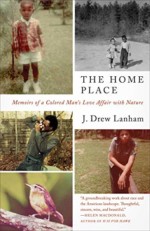
The Home Place: Memoirs of a Colored Man’s Love Affair with Nature by J. Drew Lanham
A 2016 memoir by an ornithologist about nature, belonging, and Black identity.
“As young people of color reconnect with what so many of their ancestors knew – that our connections to the land run deep, like the taproots of mighty oaks; that the land renews and sustains us – maybe things will begin to change.”
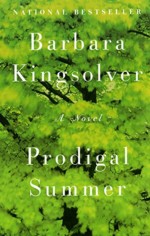
Prodigal Summer by Barbara Kingsolver
A 2000 novel which explores human love stories alongside the landscapes of Appalachia.
“This is how moths speak to each other. They tell their love across the fields by scent. There is no mouth, the wrong words are impossible, either a mate is there or he is not, and if so the pair will find each other in the dark.”
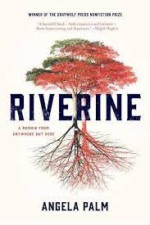
Riverine: A Memoir From Anywhere But Here by Angela Palm
A 2016 memoir and finalist for the emerging Indiana Authors Award, which takes place on the banks of the Kankakee River.
“When I came back to this spot twenty years later to see what had become of the riverbed, to see what ghosts would rise from its eroded banks, it was all still there… the defining entropy of the place was the same.”
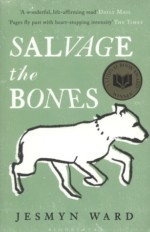
Salvage the Bones by Jesmyn Ward
A 2011 National Book Award-winning novel about four siblings struggling to survive through poverty and natural disaster.
“Away from the Pit, the pine trees reach skyward, their green-needled tops stand perfectly still. Once in a while, they shiver in the breeze that moves across their tops. They seem to nod to something that I cannot hear.”
Exploring Hoosier Environmental History and Landscapes
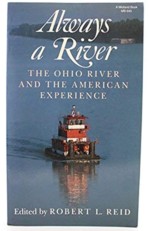
Always a River: Ohio River and the American Experience edited by Robert Reid
A 1991 book of essays tracing the Ohio River and its geographical, political, economical and literary significance.
“Chances are your own life and the history of your place are braided with the current of a river as my life and place are braided with the Ohio. When we figure addresses, we might do better to forget zip codes and consider where the rain goes after it falls outside our windows.”
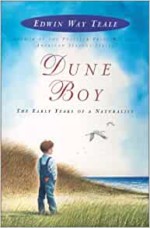
Dune Boy: The Early Years of a Naturalist by Edwin Way Teale
A 1943 collection of autobiographical short stories detailing the Pulitzer Prize-winning author’s childhood experiences at his grandparents’ farm near the Indiana dunes.
“With his head on his hands, he watched the two great birds shrink in size. In his mind, he began to picture how the farm and the marsh and the distant dunes must appear to the eagle and the crane.”
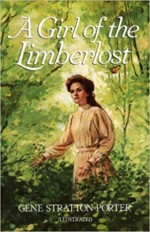
A Girl of the Limberlost by Gene Stratton-Porter
A 1909 classic of Indiana literature and progenitor of environmental fiction taking place at the Limberlost Swamp in northeastern Indiana.
“The Limberlost is life. Here it is a carefully kept park. You motor, sail and golf, all so secure and fine. But what I like is the excitement of choosing a path carefully, in the fear that the quagmire may reach out and suck me down; I even enjoy seeing an old canny vulture eyeing me.”
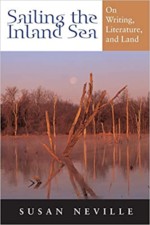
Sailing the Inland Sea: On Writing, Literature, and Land by Susan Neville
A 2007 collection of essays that considers Indiana’s landscapes and literature alongside one another.
“When writers turn their eye toward the Midwest as a place, they document the struggle between freedom and restraint, passion and control, between wildness and the sacrifices and joys of domesticity.”
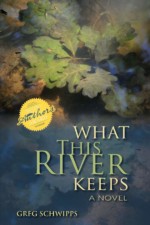
What This River Keeps by Greg Schipps
A 2012 novel by an Indiana Authors Award-winning writer which takes place in southern Indiana and explores the relationship between family and the places we call home.
“The river now met sand about three inches below the stick Frank had stuck upright to mark the water level before he went up to the bank to sleep. He examined that—how the river had dropped so much in the last hours. If it rained tomorrow it would rise again. The river rose and fell, rose and fell.”
Humanities Frameworks and the Natural World
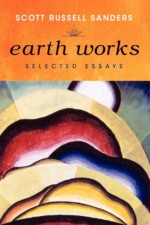
Earth Works: Selected Essays by Scott Russell Sanders
A 2012 collection of essays considering personal history and philosophy alongside questions of consumerism, sustainability and technology.
“Like all works of art, my essays are products of Earth, as are you, as am I, and we are able to make books and babies, to wonder and sing, to spend our brief time under the sun, only because Earth works miraculously well, providing us a benign habitation in the void of space.”
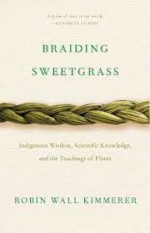
Braiding Sweetgrass: Indigenous Wisdom, Scientific Knowledge and the Teachings of Plants by Robin Wall Kimmerer
A 2015 book of essays combining botanical expertise with Potowatomi tradition to consider our relationship with the earth.
“Knowing that you love the earth changes you, activates you to defend and protect and celebrate. But when you feel that the earth loves you in return, that feeling transforms the relationship from a one-way street into a sacred bond.”
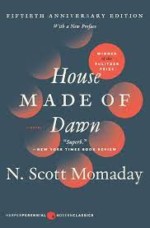
House Made of Dawn by M. Scott Momaday
A 1968 Pulitzer Prize-winning novel and classic of Native American literature, which explores themes of storytelling, temporality and our relationship with nature.
“Coyotes have the gift of seldom being seen; they keep to the edge of vision and beyond, loping in and out of cover on the plains and highlands. And at night, when the whole world belongs to them, they parley at the river with the dogs, their higher, sharper voices full of authority and rebuke. They are an old council of clowns, and they are listened to.”

Flight Behavior by Barbara Kingsolver
A 2012 novel about butterflies, rural Tennessee and the beliefs about nature we choose to hold—be they religious, scientific, philosophical or political.
“Jack London and Ernest Hemingway, confidence swaggering into the storm: Man against Nature. Of all the possible conflicts, that was the one that was hopeless. Even a slim education had taught her this much: Man loses.”
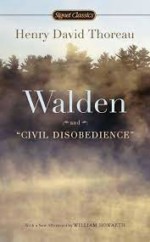
Walden and Civil Disobedience by Henry David Thoreau
The classic 1854 work of transcendentalism, which promotes the way of self-reliant simple living amidst nature.
“I went to the woods because I wished to live deliberately, to front only the essential facts of life, and see if I could not learn what it had to teach, and not, when I came to die, discover that I had not lived.”
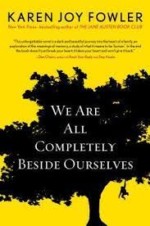
We Are All Completely Beside Ourselves by Karen Joy Fowler
A 2014 novel by an Indiana Authors Award-winning writer, which explores the thin line between animals and humans through the story of a family with a chimpanzee daughter.
“It seems to me that every time we humans announce that here is the thing that makes us unique—our featherless bipedality, our tool-using, our language—some other species comes along to snatch it away. If modesty were a human trait, we’d have learned to be more cautious over the years.”
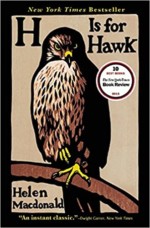
H is for Hawk by Helen Macdonald
This 2014 work of nonfiction describes the author’s journey raising a hawk—an animal typically viewed as a predator.
“The archaeology of grief is not ordered. It is more like earth under a spade, turning up things you had forgotten. Surprising things come to light: not simply memories, but states of mind, emotions, older ways of seeing the world.”
Nature and Stewardship
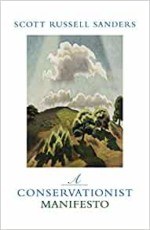
A Conservationist Manifesto by Scott Russell Sanders
A 2009 work of nonfiction, which calls for an ethic of care through conservation and responsibility.
“How might we shift to a more durable and responsible way of life? What models do we have for a culture of conservation? What changes in values and behavior would be required to bring it about? Where can we see it emerging in practice?”
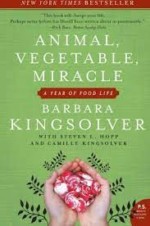
Animal, Vegetable Miracle: A Year of Food Life by Barbara Kingsolver
A 2007 memoir describing a year in the life of the author’s family wherein they committed to eat only locally sourced food.
“If every U.S. citizen ate just one meal a week (any meal) composed of locally and organically raised meats and produce, we would reduce our country’s oil consumption by over 1.1 million barrels of oil every week.”
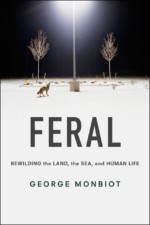
Feral: Rewilding the Land, the Sea, and Human Life by George Monbiot
A 2013 work of nonfiction describing the practice of rewilding, wherein ecosystems are freed from human intervention.
“Rewilding, to me, is about resisting the urge to control nature and allowing it to find its own way. Some people see rewilding as a human retreat from nature; I see it as a re-involvement.”
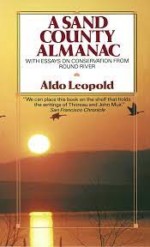
A Sand County Almanac by Aldo Leopold
A 1949 book of essays and classic of environmental writing which has inspired decades of conservation efforts.
“Conservation is getting nowhere because it is incompatible with our Abrahamic concept of land. We abuse land because we regard it as a commodity belonging to us. When we see land as a community to which we belong, we may begin to use it with love and respect.”
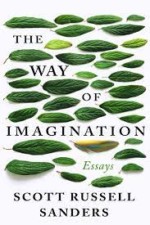
The Way of Imagination by Scott Russell Sanders
A 2020 book of essays and guide through our current ecological crisis, which centers imagination and compassion as the ways forward.
“If all we know of Earth is what comes to us through earbuds and screens, or through windows and books, we may grasp the unity of life as a concept, but we are unlikely to feel kinship with other animals and plants, let alone with mountains and rivers and stones. The feeling of kinship is the source of kindness; we treat with respect and care for those people, creatures, and places we regard as kin.”
Our Legacy and the Anthropocene
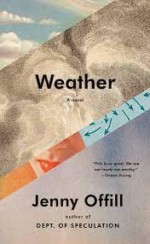
Weather by Jenny Offill
A 2020 novel telling the story of a college librarian whose fragmented musings mirror the environment around her.
“Ben and I made a list of requirements for our doomstead: arable land, a water source, access to a train line, high on a hill. Are we on a hill for floods or defense? Both. I’ll build a moat, he said, and then went on the internet to learn how to do it.”
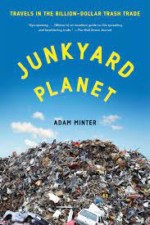
Junkyard Planet: Travels in the Billion-Dollar Trash Trade by Adam Minter
A 2013 nonfiction book that explores the trash industry and its troubling impact on our environment.
“Placing a box or a can or a bottle in a recycling bin doesn’t mean you’ve recycled anything, and it doesn’t make you a better, greener person: it just means you’ve outsourced your problem… Fortunately, if that realization leaves you feeling bad, there’s always the alternative: stop buying so much crap in the first place.”
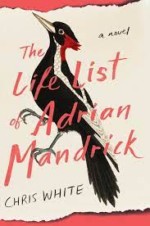
The Life List of Adrian Mandrick by Chris White
A 2020 Indiana Authors Award-winning novel, which tells the story of a birder’s quest to add the near-extinct Ivory-billed Woodpecker to his life list.
“Utterly dependent on its habitat, a species cannot continue without it. If that habitat is sufficiently degraded, overtaken by an invasive species, or altered by climate or other environmental changes of note, the species must either adapt to these changing conditions (i.e. by changing as well) or locate and adapt to a new habitat… Changing is always difficult. Sometimes it’s too late.”
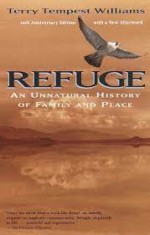
Refuge: An Unnatural History of Family and Place by Terry Tempest Williams
A 1991 memoir telling the story of the author’s personal griefs set alongside environmental change.
“The eyes of the future are looking back at us and they are praying for us to see beyond our own time. They are kneeling with hands clasped that we might act with restraint, that we might leave room for the life that is destined to come. To protect what is wild is to protect what is gentle.”
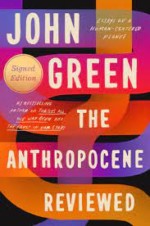
The Anthropocene Reviewed by John Green
The bestselling author’s latest work of nonfiction inspired by his popular podcast of the same name, exploring the way we live now in the world we have altered.
“Humans are not the protagonists of this planet’s story. If there is a main character, it is life itself, which makes of earth and starlight something more than earth and starlight. But in the age of the Anthropocene, humans tend to believe, despite all available evidence, that the world is here for our benefit.”
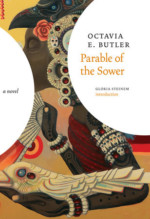
The Parable of the Sower by Octavia Butler
A 1993 work of science fiction which imagines a future of chaos and climate-related destruction.
“That’s all anybody can do right now. Live. Hold out. Survive. I don’t know whether good times are coming back again. But I know that won’t matter if we don’t survive these times.”
Novel Conversations is Indiana Humanities’ statewide lending library, which lends more than 900 titles, primarily fiction and biography, to reading and discussion groups all over Indiana, free of charge. We also have books available in several other genres, including nonfiction, mysteries, plays, poetry and young adult.
